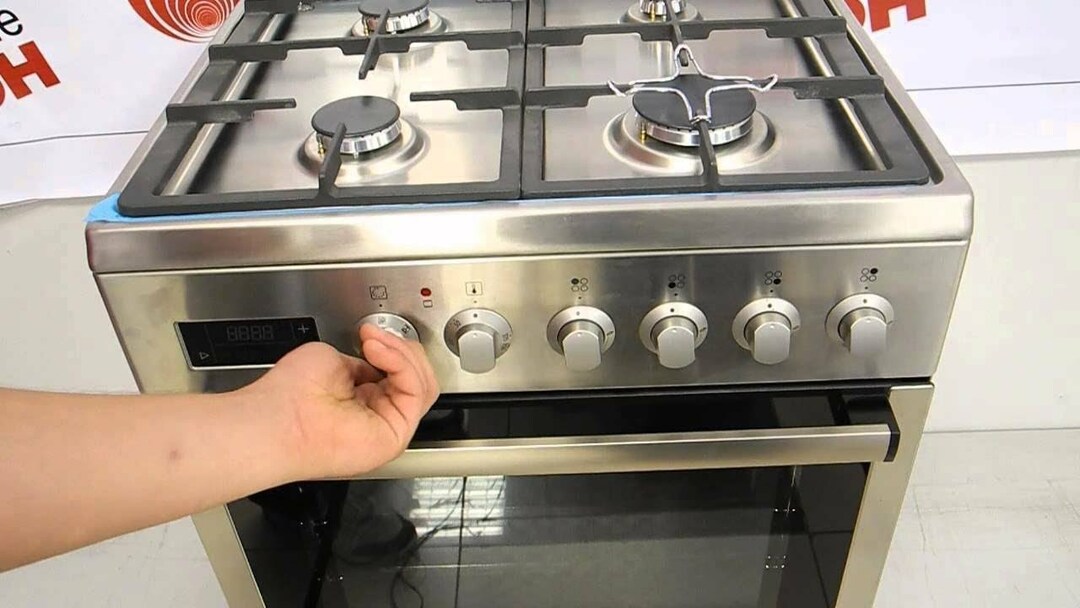The gas water heater is very popular among apartment owners and private houses. Of course, the device does an excellent job of providing residents with hot water, does not require complex maintenance, and the cost of the fuel used is minimal. But it has a water heater and one serious drawback - a gas leak can lead to an explosion, destruction of a house and death of people. Therefore, it is extremely important to timely identify the breakdown and know how to check the traction in the gas water heater at home.
Each element of the device must work flawlessly, any malfunctions must be corrected immediately, and the failed parts must be replaced immediately. Regular checks of the system are carried out by specialists of the gas service, but you can periodically examine some of the elements on which the safety of people living in the house depends on yourself.
We will try to figure out how to test the structure, in particular, check the draft of the water heater, at home. The article will also consider effective ways to combat the lack of draft in the smoke channel.
The content of the article:
-
The best ways to check traction
- Method # 1 - using an anemometer
- Method # 2 - using a match
- Method # 3 - checking the thrust sensor
- Reasons for lack of traction
- How to increase traction in a water heater?
-
Backdraft elimination methods
- Column with automatic ignition system
- Ignition wick water heaters
- Conclusions and useful video on the topic
The best ways to check traction
For the correct operation of gas water heaters with an open combustion chamber, you will need good draft and correct arrangement of the chimney. Most modern models are equipped with an automatic safety system that prevents the device from starting if there is no traction.
Next, we will consider how you can check the draft in the chimney of a household gas boiler and a column.
Method # 1 - using an anemometer
A professional check of the draft in the chimney of a gas boiler and a column is carried out using a special measuring device - an anemometer.
It can be used to verify the presence of air traffic and determine its strength. The indicator should be equal to 1.96-29.40 Pa.
Method # 2 - using a match
If it is not possible to use an anemometer, you can check as follows:
- Prepare paper strips and secure them at the entrance to the mine channel. First, remove the horizontal part of the chimney. The movement of a part of the leaf will signal the presence of traction.
- Adequate thrust can also be determined by using a flame. A lit match should be directed vertically towards the viewing window of the front panel of the water heater.
The flue must be checked before firing up the water heater. The flame brought to the viewing hole at the top of the column during operation must be drawn inward.
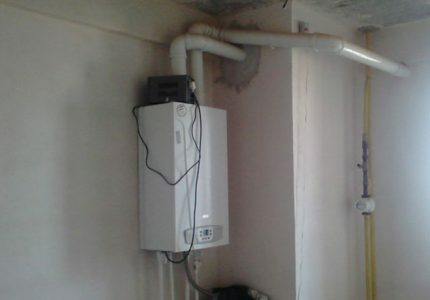
It is necessary to check the draft in the gas column every time before turning on the device. Open the vent for air intake
Method # 3 - checking the thrust sensor
Several control modules are installed in the water heater. Overheating, traction, ionization, water pressure sensors prevent emergencies.
The draft sensor monitors the temperature of the exhaust gases, and when it rises, it reacts accordingly:
- Inside the sensor there is a bimetallic plate attached to the gas valve.
- The metal expanding as a result of overheating transmits the signal to shut off the gas supply.
- The cooled plate returns to its original dimensions, while opening the valve.
It is recommended to check the serviceability of the sensor when the column is systematically turned off.
This can be done in several ways:
- place a mirror next to the sensor, its surface should not sweat when the water heater is turned on;
- the serviceability of the sensor will be indicated by the shutdown of the gas column when the chimney is closed by a 2/3 damper.
In some models of the water heater, the regulator is installed on a plastic mount that can be easily moved. This will also lead to frequent shutdowns of the speaker.
You can also test the serviceability of the sensor using an ohmmeter, its resistance should be equal to infinity. Otherwise, the part should be replaced.

The sensor shuts off the gas supply in the event of a gas leak and poor discharge of combustion products. Serviceability of the protective element - a guarantee of the safe use of the water heater
The owners of the house, with a constant interruption in the fuel supply, often simply turn off the sensor, after which the water heater really starts working without interruption. But such a decision breaks the technique. operational safety gas equipment. The water heater will remain unprotected; if a leak occurs, carbon monoxide will enter the room.
It is strictly forbidden to use a gas water heater in the absence of rarefaction in the chimney. Consider the possible reasons for the lack of traction.
Reasons for lack of traction
The source of the malfunction can be identified by visual inspection of the column for errors made during its installations.
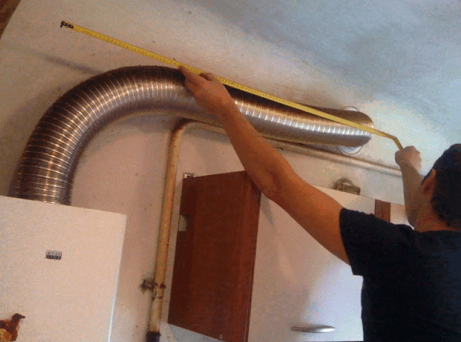
Violation of the technology for installing a gas water heater, as well as the use of low-quality materials when installing a water heater are the main reasons for the lack of traction
There are several typical violations:
- The diameter of the air duct is less than the cross-section of the outlet pipe of the water heater.
- Using more than three repeated corners and adapters when installing the pipe.
- The chimney length is less than 2.5 meters.
- The chimney connections are loose, there are leaks.
- The distance from the water heater to the chimney is less than 30-50 cm.
- The length of the corrugation exceeds 2 meters.
It is also important to assess the compliance of the premises with the technical operational conditions. It is forbidden to install a gas water heater and a forced exhaust in one room. When installing metal-plastic windows, supply valves must be used.
How to increase traction in a water heater?
One of the main reasons for the lack of draft is a blockage in the smoke channel. Often this problem occurs in old-style apartment buildings.
In the so-called Khrushchev buildings, 2 shafts are laid - for the column and the ventilation one. First of all, it is necessary to call specialists for cleaning.
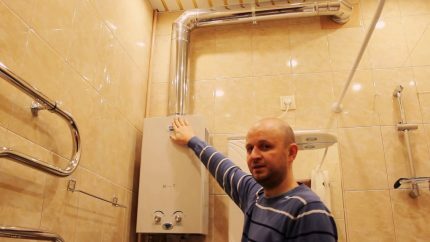
Removing the blockage in the flue gas duct will help to increase the draft in the water heater. You can clean it yourself using a metal brush or a special brush.
In a private house, the improvement of draft should begin with an audit of the chimney and an assessment of the contamination of a littered pipe. After removing the blockage, a mirror is placed inside the channel. There should be light at the top of the chimney. It is recommended to carry out such a procedure at least once every three years.
Poor draft can also be caused by improper installation of the chimney hood or a lot of unnecessary turns, sharp corners and bends in the pipe. If the correction of mistakes made during installation did not help, you can increase the draft in the chimneys using smoke exhausters and fans.
Backdraft elimination methods
You should pay attention to any, even the most insignificant, changes in the operation of the gas device. If the water heater emits extraneous sounds or turns on with a pop, you should immediately contact a specialist.
Pops are most often found on older speaker models. In modern flow columns, such shortcomings are extremely rare. Extraneous sounds occur due to the accumulated gas in the heat exchanger, which can subsequently occupy the entire chimney.

It is possible to determine the presence of reverse thrust in the gas column using measuring instruments. The indicator is set with maximum accuracy, in pressure units
In most cases, such a violation provokes a blockage of the chimney, a breakdown of a valve, or a deflection of the ignition wick.
In new models of a water heater, a malfunction can cause:
- spark plug marriage;
- a spent battery installed in the control unit;
- faulty microswitch located in the water unit.
Having decided on independent repair work, first of all, it is necessary to check the traction intensity using one of the methods listed above.
Further diagnostics will differ depending on the type of device - with an ignition wick or an automatic ignition system.
Column with automatic ignition system
In this type of water heater, the ignition device is controlled by the electronic module. The system with microswitches located on the fire and fluid regulators is considered one of the most reliable. Repairing a broken part can lead to significant costs.
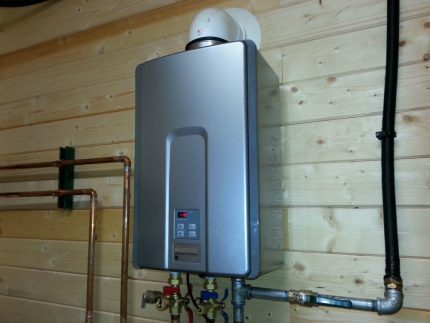
The principle of automatic ignition is the basis of the work of gas water heaters of the new generation. Such devices are equipped with several safety sensors.
You can establish the severity of the breakdown as follows:
- Explore batteries. Delayed ignition of the gas may be due to a low battery charge. In this case, it is enough replace power supply on new.
- Check the functionality of the micro-regulator of fluid pressuredesigned to transmit signals to the control unit. Its activity is associated with the supply of water when it is necessary to ignite the gas. Like other regulators, it can fail and give incorrect commands. The problem can be identified with an ohmmeter and a multimeter. The worn-out element should be replaced with a new one.
- The reason for the appearance of uncharacteristic sounds can also be the deformation of the location of the device that ignites the gas.. A malfunction usually causes a temperature difference. The part is fastened with a screw, you should loosen it slightly and correct the position of the candle. The gap should be 0.4-0.5 cm.
- Gas can also build up due to a faulty valve, which causes the fluid flow to slow down.. The small metal ball should move freely under the cover. If its movement is disturbed, you can try to move the valve out of place with a cable. If there is contamination, the channel should be cleaned. But it is not recommended to carry out such a procedure without special need.
Upon completion of the repair work, it is necessary to check the joints for leaks. You can enhance safety with rubber gaskets and special sealants.
Ignition wick water heaters
Flowing gas columns of the previous generation often emit characteristic claps when turning on. Such structures are considered not very convenient and often even unsafe, at the same time much less money will be needed to repair them.

Gas popping can be eliminated by cleaning impurities from the hole in the nozzle. It is necessary to carry out the procedure monthly or annually - depending on the quality of the fuel used
The accumulation of gas in an inappropriate place can be triggered by an incorrect position of the ignition wick. A violation results in a decrease in flame and inability to reach the edge of the burner with the edge. The main reason for the insufficient amount of gas supplied to the wick is a clogged jet.
You can fix the problem yourself, but for this you need to completely disassemble the device.
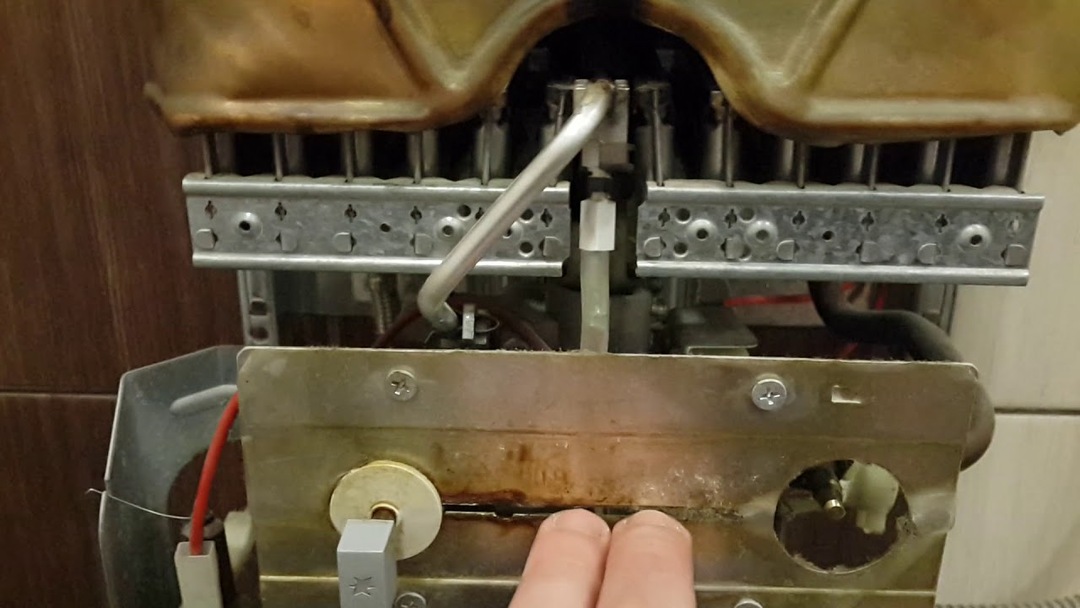
Be extremely careful when repairing the device, put all removed screws in a separate container so that they are not lost. After removing the heat exchanger, take a picture of the location of the structural elements, this will help you later easily connect everything correctly
The first step is to shut off the water and gas supply.
The main part of the water heaters has the same type of scheme, so the repair instructions will practically not differ:
- First, it is necessary to dismantle the protective casing of the water heater.
- Provide free access to the tee.
- Unscrew the fastening screws, then remove the nuts for the supply pipes and the regulator.
- The tee must be carefully pulled out of the groove.
- Examine the bottom pipe. A small screw with a through hole is the jet.
- The nozzle should be cleaned with a needle or wire.
- Upon completion of all work, you need to assemble the water heater in the reverse order.
If the problem persists, contact the gas company specialist.
There are other reasons for the appearance of reverse thrust:
- Seasonal changes, in this case, you need to make sure that there are no errors when installing the chimney, insulate the channels.
- Air lock inside the smoke channel can provoke a back draft in the chimney of a household gas water heater. To eliminate the malfunction, set fire to the newspaper inside the pipe.
- Forced exhaust in a room with a dispenser triggers the compensation process, the air comes from the flue duct. Reinforced plastic windows only exacerbate the problem; in some houses, air from the chimney begins to actively flow into the room.
For more information on the causes of reverse draft in the chimney, we have considered in the next article.
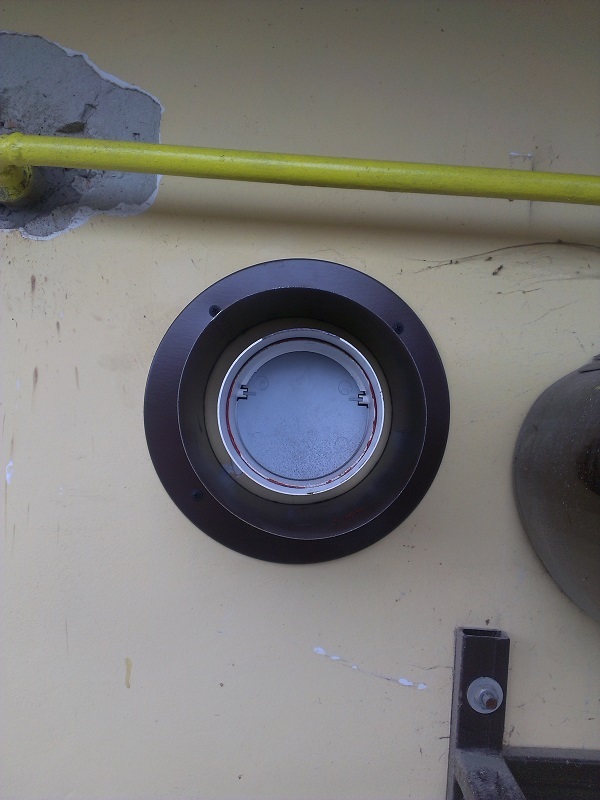
The check valve can cause problems with the operation of the gas column. If the water heater began to extinguish periodically, the reason is the shutdown of the exhaust. In this case, contact a gas service specialist to check the installation standards for the chimney and, if necessary, reinstall the damper.
The situation with air compensation can also be corrected with the help of a check valve for the chimney of the gas column. You should also dismantle the fan, buy supply valves for metal-plastic windows.
Mechanical shut-off devices, known as a non-return valve or a water heater damper, ensure that liquid and gaseous media flow in only one direction.
Designed for turbocharged gas water heaters. Their action is based on the opening of the exhaust outlet when the column is running and closing it after shutdown, which guarantees safe use.
Conclusions and useful video on the topic
How to extend the life of a gas column:
The gas water heater goes out: what is the reason and how to troubleshoot:
Checking the draft in the smoke and ventilation duct:
Checking the draft in a water heater is a prerequisite for the safe use of gas equipment. With the reverse movement of the ventilation stream, the flow of gases rushes into the room, which can lead to smoke and fire of surrounding objects. You can make sure that the thrust is overturned on your own, without the involvement of specialists. It is enough to adhere to the recommendations given above.
Have you also faced the problem of deterioration or lack of traction? We are waiting for your questions, participation in the discussion of controversial issues or stories from personal experience - the feedback block is located below.

